Advanced Metal AM Redefining Existing Markets, Creating New Product Categories
Manufacturers worldwide are beginning to reap the benefits of high-value, production-ready, advanced metal additive manufacturing (AM), realizing the economic potential for large-scale industrial change and market-altering performance. Benny Buller, founder & CEO of VELO3D, writes about the progress he has seen in the ease and stability of the AM process, but also how the technological leaps have been slow and uneven.
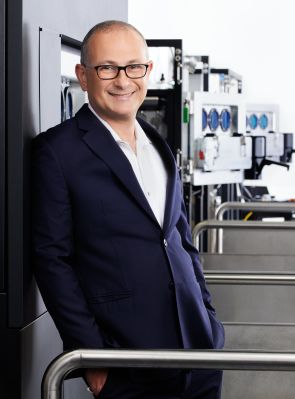
Benny Buller -- Founder & CEO of VELO3D
The most industrial-focused and impactful segment of metal AM is Laser Power Bed Fusion (L-PBF). Here, progress toward mainstream performance has been anything but steady and inspiring. Yes, there have been more lasers added and more choices provided in powder materials. But design freedom has until now been stalled around old rules, limits -- and costs.
"Freedom" should provide unconstrained angles and internal dimensions without extensive post-processing for surface finishing and support removal. And freedom should be delivered with measurable, real-time, process and quality controls. All of these were simply not available until recently.
True reliability and production repeatability translate as: first part, tenth part, hundredth part -- same geometry and material characteristics -- printed exactly the same in both Oklahoma and Ohio, Seville and Seoul, on separate self-calibrating machines. This is what's needed for innovation-based market growth -- the industry's next chapter.
Real growth -- that flourishes out of invention and creates new, unique, expansive applications that are paradigm-breaking -- can't be accomplished without repeatable production outcomes of the highest industrial quality. To date, this dynamic has been largely missing from commodity AM.
It's hard to hear this stated. There has been much progress. Yet, until AM performs more daringly, predictably, and as easily as CNC operations, the true potential of AM will be reached far too slowly -- even as markets in aerospace, oil & gas, power generation and heavy industry clamor for a full-production approach.
How will production-ready AM transform the supply chain?
There are three key areas where metal L-PBF can benefit a company's manufacturing agility and capacity for product-design innovation. They are:
- Direct-part replacement of legacy designs without need for DfAM (an "as-is" design)
- Part consolidation of existing designs into single, more multi-functional components and assemblies
- Blank-slate, novel and fully optimized AM product design
These three design-engineering markets cover all of AM-specific manufacturing. Each can be functionally improved by advanced AM with a corresponding boost to product economics.
Direct-part replacement is within reach
Direct-part replacement is an area where certified AM processes (along with approved-material guidelines) can have an immediate impact. Take commercial aviation. The industry is in crisis today, not just from pandemic-caused drops in passenger travel but from the inability to affordably replace worn components.
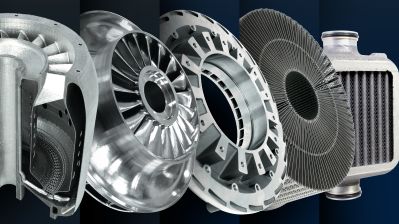
With advanced AM, manufacturers can create new products that have higher acceptance, end-use benefits and profits.
The health of the industry strongly depends on a more financially viable and agile parts supply stream. That means avoiding large, upfront investments in tooling when part stocks decline and demand is uncertain or falling.
Fleets holding older aircraft are loath to spend the often hundreds-of-thousands of dollars on hard tooling for a multitude of part types that have volumes of only five to 30 per year or so. Such low inventory turns don't justify the high, disproportionate capital tooling expenses given initially to new products.
As a result, still-valuable aircraft remain parked for lack of high-quality, cost-effective cast replacements for landing gears, engines components and more.
The direct-part replacement market, in aviation and beyond, is ripe for high-quality AM. AM enables agile manufacturing and digital inventory replenishment that ensure adequate stock while avoiding the shortfalls and panics of Just-In-Time.
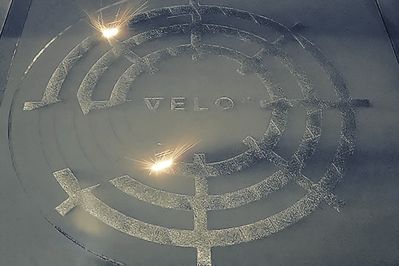
The most impactful segment of metal AM is Laser Power Bed Fusion.
Moreover, AM metals are metallurgically superior to casted metals, making them an excellent performance stand-in and supply chain solution. In the total-cost picture of keeping aging planes flying, or legacy oil rigs drilling, AM provides the necessary speed, flexibility and performance to avoid costly downtime.
Part consolidation of existing designs is a good fit
The benefits that apply to direct-part replacement also factor into lowering the cost of producing proven, legacy designs. An aging design has often stood the test of time. It's reliable, desired by customers and has a stable business ecosystem around it. Why consolidate its separate parts?
When one considers the fact that much of the cost of producing parts goes into the perfection of the surfaces where they interface -- both in terms of dimensional accuracy and surface finish -- eliminating a multitude of interfaces becomes a sure avenue for cost reduction. In addition, the manufacturing flow that produces the assembly in a single print is dramatically simpler and shorter than that of creating the assembly from individual parts. This in turn leads to an extreme reduction in production times.
A consolidation of an assembly into "elegant" AM produced parts is an attractive path for cost and production time reductions with relatively light engineering investment and risk. AM is the perfect part-consolidation process. Even more so than casting and molding. No other method can build more features and behaviors into fewer parts.
An example of this can be found in the redesign of a popular jet engine. The manufacturer had decided to reduce its production cost burden by taking more than 100 parts down to one, using an earlier-generation AM machine. They succeeded dramatically in this -- reducing cost by 50% and lead time by 90% -- but in the effort lost 30% of the engine performance. The question was: could advanced AM fix the specific performance areas where conventional AM processes and DfAM methodologies had fallen short?
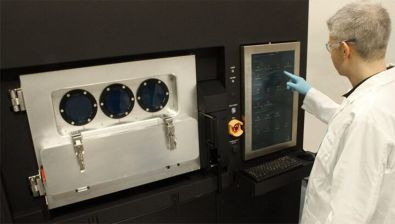
Buller believes AM, as a category of manufacturing, must become as internally automated, predictable, easy-to-use and production-ready as its factory-floor companion, CNC.
The central problem was that adapting and redesigning around the DfAM limits of conventional AM had reduced the effectiveness of the original consolidated design. Performance was directly compromised in order to enable AM manufacturability of the consolidated assembly.
As a solution, an advanced L-PBF printer could fully deliver the novel design in question, continue the savings, and restore the engine performance to its original metrics. While this is a commercial-aviation example, its applicability for other industries is obvious. Part consolidation in legacy products -- which removes costs in the supply chain, factory, ERP and MES systems, and through avoiding quality failures in mating surfaces -- is a key to excellence and profitability.
As engineers have realized, and some are still learning, costs (and quality) are locked into a design early on. Each individual part in a product -- that could otherwise have been incorporated into a single, multifunctional component -- has a separate part number and existence. These unnecessary parts and their numbers will travel through numerous engineering, accounting, purchasing, and manufacturing and scheduling systems toward final assembly, packaging and shipping.
There are added material and production costs accumulated along the way, too, and extraneous suppliers to manage. Big savings always start in design and thunder downstream. Today, advanced AM can eliminate part proliferation and make those high-value, consolidated designs. It has proven to reduce accumulated manufacturing and supply chain burdens, and positively influence surrounding, downstream costs.
Blank-slate AM designs -- once only a dream
Conceptual design distilled from bold core requirements has never been more possible than today.
When we start from a pure thermodynamic, fluid, energy or structural goal, a design can realistically take shape around a deeply sought-after performance metric rather than the constraints of either the CAD system or manufacturing method. This is only a recent reality. The interdependent disciplines of design and advanced AM are now allowing for complex, finely detailed products to emerge that are optimized around every relevant physics that affect performance.
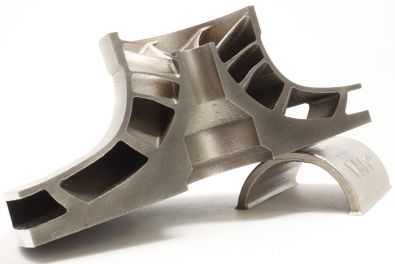
Advanced AM can fix specific performance areas where conventional AM processes have fallen short.
As we hit a new apex for modeling and simulation, AM, as a category of manufacturing, must become as internally automated, predictable, easy-to-use and production-ready as its factory-floor companion, CNC. The old rules of DfAM that have literally propped up first-and-current-generation AM part structures need to be discarded -- and AM systems reengineered. There is no standing still.
The changing economics of advanced metal L-PBF AM have arrived to help aging and planned-for aircraft development, imaginative aerospace projects, critical oil and gas operations, alternative-energy ventures -- and every high-performance-focused area of general industry -- reach greater heights.
Whether duplicating a legacy design or making breakthrough rocket fuel nozzles, advanced AM is performing new feats of engineering and creating vastly better production economics via scalable and distributed manufacturing strategies.
With this flexible capability comes greater opportunity to redefine existing markets, create entirely new product categories and develop quality products that have higher acceptance, end-use benefits and profits. We challenge the design community to put aside old AM limits and rules. It's time to test our most ambitious design concepts with new, advanced metal AM.
Want more information? Click below.
Rate this article
View our terms of use and privacy policy ::m::